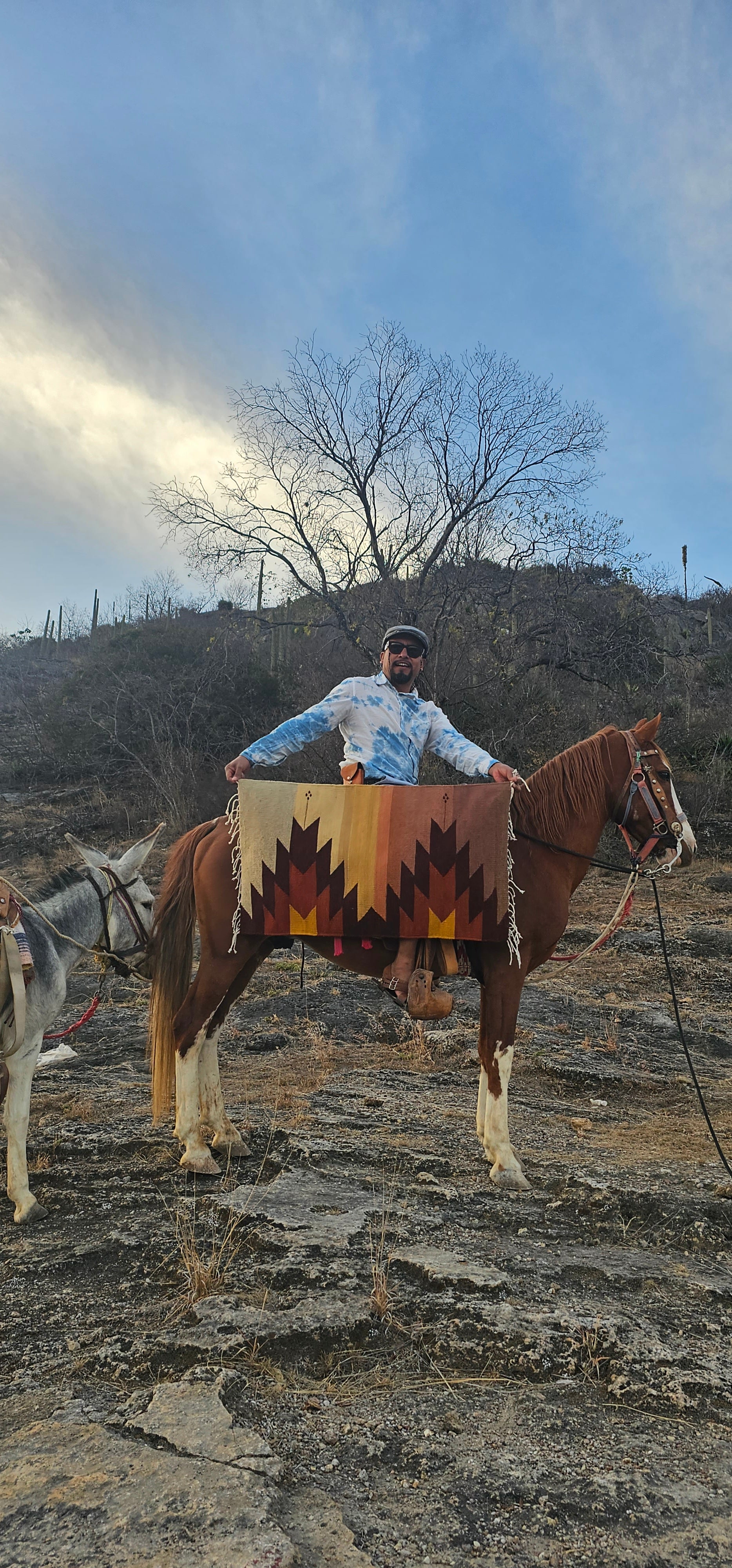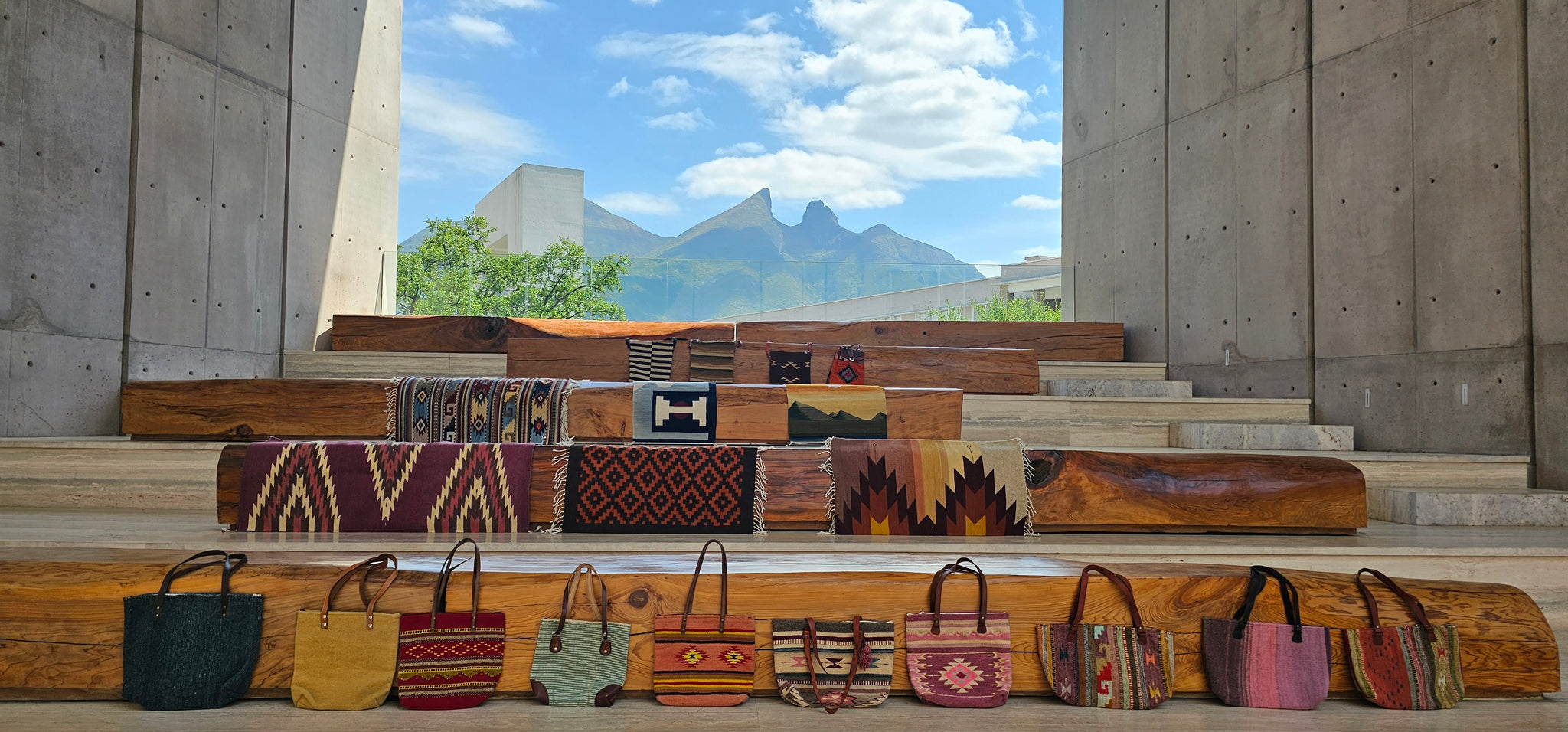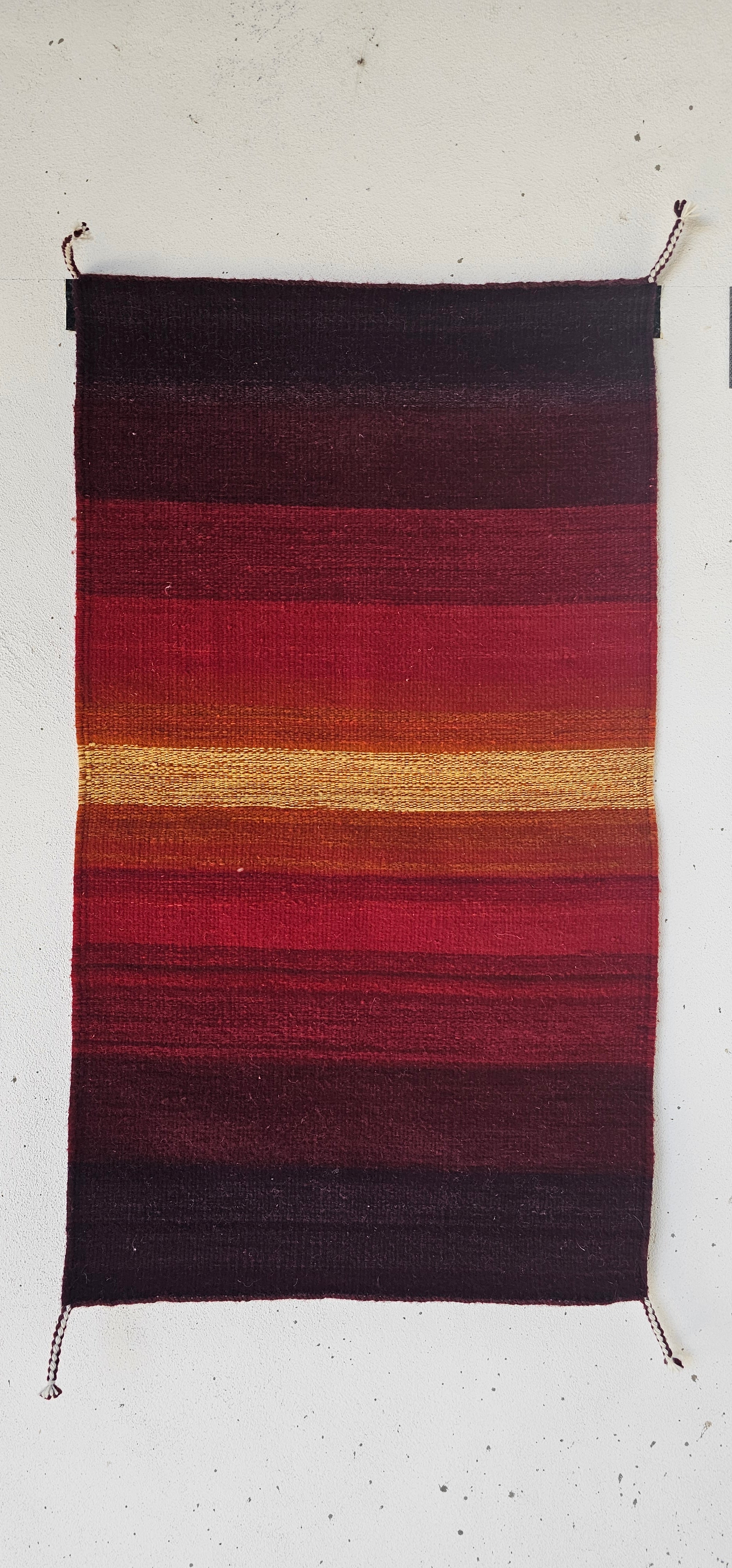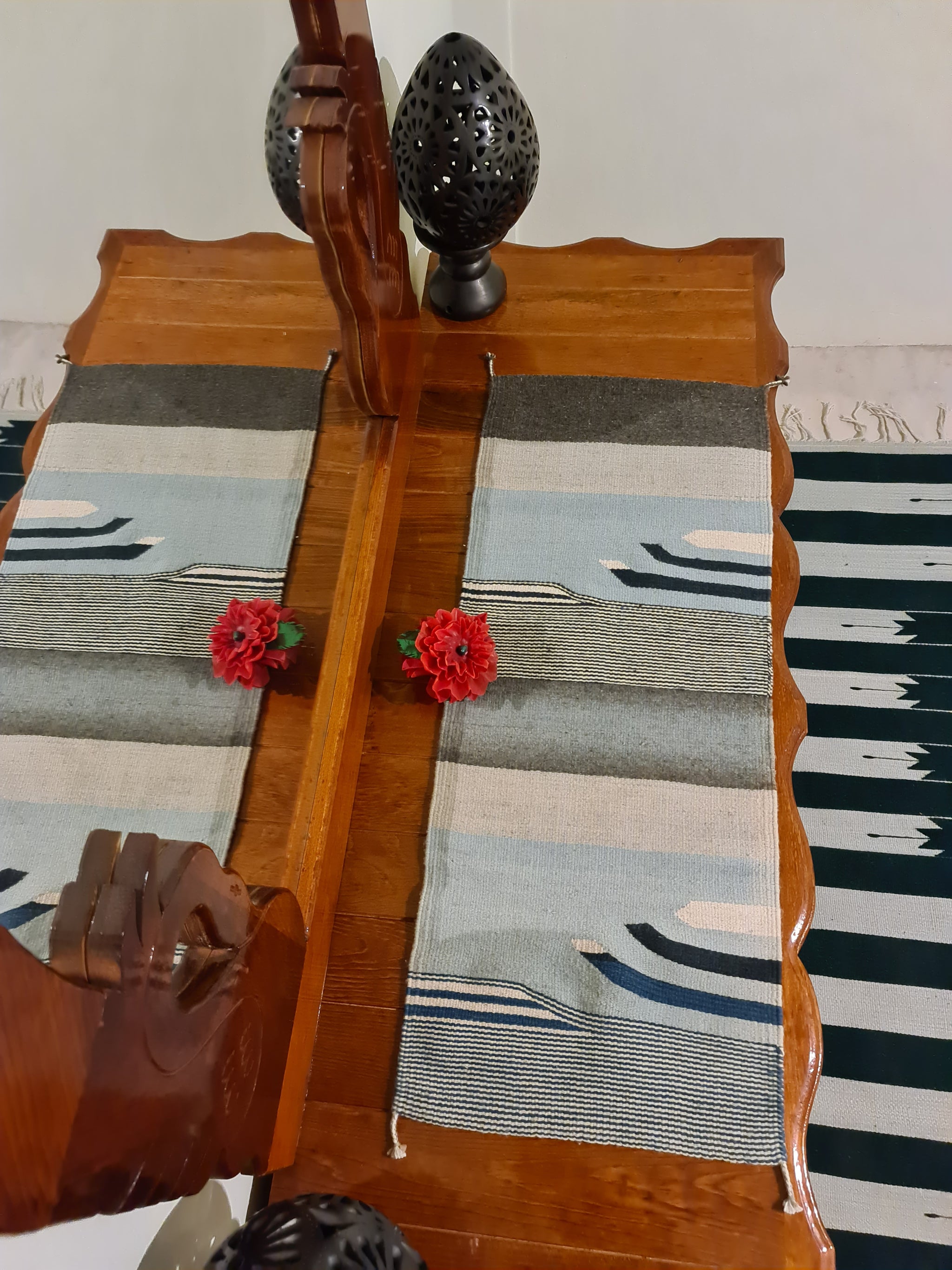Size: 60x100cm 2x3ft
Weaver: Familia Mendoza
Materials and methods: criollo sheep wool spun in the mills of the Batalla family in Tianguistengo. Hand dyed yarns by Leonor Lazo using natural dyes: Béé (Dactylopius Coccus), Yauhtli (Tagetes lucida), Cempasuchitl (Marigold) and synthetic dyed yarns for bright yellow, rust and deep maroon. Handwoven on a Zapotec style loom of the 16th century adapted from European styles. Woven using a 7 threads per inch reed and wool rayon blend for warp.
Design, patterns and symbols.
This rug depicts the agave pattern with a little quiote in the middle and four seeds that will disperse in the four directions. The agave plant is sacred to us because our ancestors were nurtured, clothed, and protected by this Plantcestor. In the hunting gathering era, agave hearts were cooked to eat and their fibers were spun into twines and ropes, some prehispanic sandals were still made out of woven agave fibers. There is also evidence that our ancestors were distilliing agave into Nis Duv Badaou (Mezcal) and drinking it in ceremonies and gatherings. Mezcal is a spiritual drink. The agave plant spends most of its life gathering the sun's energy and storing in its heart in the form of suggars. Cultivated agaves take around 6 to 7 years to mature and be harvested, but the wild varieties can take up to 35 years to mature before they can be used for distilling Mezcal. Drinking such a gift of nature should be for special ocassions and in moderation, our elders start their days with a shot of Mezcal and end their days with another sho, often this shots are curados, Mezcal infused with healing plants.
Mezcal, Pulque and Tepache got bad press in the early 1900s because their were the drink of the people and were produced locally with native ingredients. Beer manufacturers started a campaign against Mezcal and slowly creeped into our ceremonies. My dad remmebers that at weddings people would have a crate of beers only and serve it in Mezcal type shots for everyone to taste. Nowadays, beer is the main drink at weddings and funerals, when Mezcal used to be our spirutal drink by traditon. Mezcal is now coming back to us as more and more families revive their Mezcal production traditions, but now we face challenges of sustainable agave production and regenerative wild agave planting, plus the inmense pull of a global demand for Mezcal that might end up making good quality Mezcal not accesible for everyone.
In spite of this agave keeps bringing its medicine to the world, all that ancient sunlight gathered by the plant in its life time fuels the growth of the quiote that will produce the flowers which turn to seeds when polinated by bats and bumble bees. This natural push of the plant towards the sky translates into the Mezcal high, it is said that a 100% agave Mezcal won't give you a hang over, when drunk consciously it produces magical state of being that reminds us of our cosmic origins. Mezcal has many medicinal uses and its syrup has low glycemic index, on top of that, the plant feeds from the morning dew, making it a great ally for Zapotec farmers as we face dryer weather and climate change that affects our milpa food system.































